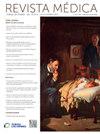Evaluación de la eficacia del consejo nutricional y suplemento dietético en el control de la neuropatía periférica inducida por quimioterapia
IF 0.4
Q4 MEDICINE, GENERAL & INTERNAL
引用次数: 0
Abstract
Chemotherapy-induced peripheral neuropathy (CIPN) is a heterogeneous group of neuropathies caused by oncological treatments and is the most common neurological complication related to chemotherapy. Currently, there are few treatment alternatives. The objective of our study is the assessment and control of CIPN, through nutritional advice associated with a dietary supplement (DS) based on non-enzymatic antioxidants (Neuronuva®).
A quasi-experimental study with a six month follow-up was carried out in 31 patients. Measurements that included a questionnaire and physical examination were performed at baseline, at 3 and 6 months, in patients with acute or chronic CIPN grade 2 or higher on the NCI-CTCAE scale. NPIQ was caused by oxaliplatin in 54.8%, by paclitaxel in 19.4%, by cisplatin, carboplatin or nabpaclitaxel in 6.5% each and by docetaxel or eribulin in 3.2% respectively. At three months after the start of nutritional advice and SD, 24 patients showed improvement in NPIQ with an objective response rate of 77.4% (95% CI 0.61-0.93), 5 patients (16.1%) showed no changes, and 2 patients discontinued SD. After administration of SD, NPIQ showed improvement at three months (p = 0.001) and at six months (p = 0.002). Although there is no effective therapy thats completely controls CIPN, the data obtained in our study are favourable, showing a clear improvement in CIPN in more than 2/3 of patients. We propose carrying out larger multicentre confirmatory studies. In addition, the use of this DS, together with nutritional measures, could be considered as prophylaxis in chemotherapies that are more neurotoxic.
评价营养咨询和膳食补充剂在控制化疗诱发的PN方面的有效性
化疗诱导的周围神经病变(CIPN)是由肿瘤治疗引起的异质性神经病变,是与化疗相关的最常见的神经系统并发症。目前,几乎没有其他治疗方法。本研究的目的是通过与非酶抗氧化剂(Neuronuva®)膳食补充剂(DS)相关的营养建议来评估和控制CIPN。对31例患者进行了为期6个月的准实验研究。在NCI-CTCAE量表中,急性或慢性CIPN 2级或更高的患者在基线、3个月和6个月时进行问卷调查和体格检查。奥沙利铂引起的NPIQ占54.8%,紫杉醇引起的NPIQ占19.4%,顺铂、卡铂或纳紫杉醇引起的NPIQ各占6.5%,多西紫杉醇或艾瑞布林引起的NPIQ分别占3.2%。在开始营养建议和SD治疗3个月后,24例患者NPIQ改善,客观缓解率为77.4% (95% CI 0.61-0.93), 5例患者无变化(16.1%),2例患者停止了SD治疗。给予SD后,NPIQ在3个月(p = 0.001)和6个月(p = 0.002)时有所改善。虽然没有完全控制CIPN的有效治疗方法,但我们的研究数据是有利的,显示超过2/3的患者CIPN有明显改善。我们建议进行更大规模的多中心验证性研究。此外,这种DS的使用,连同营养措施,可以被认为是预防化疗更神经毒性。
本文章由计算机程序翻译,如有差异,请以英文原文为准。
求助全文
约1分钟内获得全文
求助全文
来源期刊

Revista Medica Clinica Las Condes
MEDICINE, GENERAL & INTERNAL-
CiteScore
0.80
自引率
0.00%
发文量
65
审稿时长
81 days
 求助内容:
求助内容: 应助结果提醒方式:
应助结果提醒方式:


